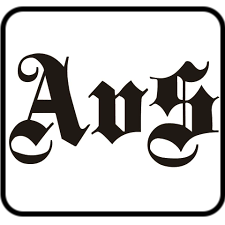Lost in transition?
02.03.2018 LifestyleIt used to be that one would roll out of a Gstaad bar or nightclub at an unconscionable hour, hail a taxi on the Hauptstrasse (not the Promenade!), and give the cabdriver the name of your chalet. The driver would repeat the name, pause a beat, then turn on the ignition, punch the meter, and away you’d go. That was it.
Chalet Diaita in Schönried? No problem. Hell, I couldn’t even tell you how to get there, and that’s where I briefly resided in the mid-80s.
Like the famed hackney carriage drivers of London, who take years to acquire the ‘knowledge’ of that metropolis’ twisty thoroughfares, taxi drivers in the Saanenland had a legendary reputation for being able to find every named chalet in the region. They could primarily because they had to – most of the smaller streets and byways in the valley didn’t have names.
In Switzerland, there is an historical taxonomy of place addressing: settlement, dwelling, street, and number. Settlements were the original address location, first named by peoples such as the Helvetii and the Raetians, and later by the Romans, Alemanni, and Franks. In the Medieval period, building and house names appeared, giving inhabitants and visitors reference points for where things could be found, e.g. ‘behind the tavern’, ‘next to the church’, etc. Around the beginning of the 16th century, streets in cities were created and were named after craftsmen or population groups, and by 1812, Zurich had introduced insurance numbers for dwellings, which foreshadowed street addressing.
In the Saanenland, for the most part, the old system endured. All buildings had insurance numbers, of course, but many had no street address. Chalets were known by their names, and directions to find them often included landmarks or general areas, such as ‘this side of Grund’ or ‘behind Saanen Bahnhof’. If one was completely in the dark about where to find a certain chalet, they could always ask a cabdriver, or the concierge of the Palace, a trusted source.
In 2006, it all changed.
That year, the Swiss Federal Directorate of Land Surveying decreed that too many roads in Swiss villages lacked names, and it was causing problems, especially for rescue and delivery services. Recommendations were issued, committees formed, and by 2008, the commune of Saanen began naming its unnamed motorways after fields or districts. They finished around 2010, after which each building had an individual street address.
Much was gained. The ability to easily find addresses with a navigation device or a smartphone was a balm to seasonal taxi drivers, moving companies, and to anyone who couldn’t afford to wait for an ambulance to puzzle their way down unlabeled roadways. But was anything lost?
Privacy was one casualty. No longer would crazed fans have to meander hysterically searching for Johnny Hallyday’s house, or Julie Andrew’s chalet. A quick search on a smartphone will give them their fix.
A sense of belonging may have been lost as well. Children who used to be known as the ‘Sulz boys’ or the ‘Vorgab girls’ now live at 39 and 82 X-strasse respectively, with all the topographical ambiguity that that implies. Since locals in the Saanenland share about eighty last names in common, such geographical haziness can lead to real confusion about exactly whom one is gossiping.
Generations from now, will hikers still wax fondly about their stroll on the ‘Bissen’ or ‘Gruben’? I hope so. The lyrical and evocative place names of this wondrous valley should always be remembered.
Alex Bertea



